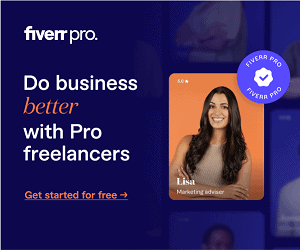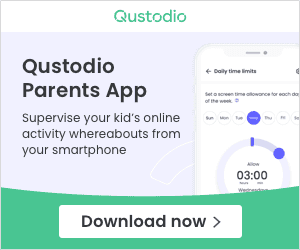So, you’ve recently launched a new company, and you’re looking to overcome the two main challenges faced by most startups at the outset: generating brand awareness and engaging new consumers.
Now, chances are that you know the answer to those challenges lies in top-notch content marketing, but marketing strategies are not all created equal!
Fledgling companies need long-lived content that communicates crucial info while also getting people on board and excited about your new venture, and that’s exactly what animated explainer videos are for!
The problem, though, is that startups have some specific content needs that should shape the way you develop (and ultimately craft) explainers that work for your brand.
To help with that, we’ll walk you through the planning process behind creating awesome explainer videos tailored to your startup’s needs that deliver on the promise of driving interest and engagement to your company.
Step 1 – Brainstorming Phase
Let’s start at the very beginning. Before tackling the production process of any explainer, you need to have a basic outline to lean back on as you progress through production. The best way to develop such an outline is to figure out your video’s purpose, message, and who it’ll be aimed at from the get-go.
What’s your Video’s Purpose
Explainer videos are highly versatile and can be used to showcase many concepts, ideas, and marketing messages. And while that versatility is a powerful asset, you do need a clear and understandable starting point to get your video production set in the right direction.
The first step would be to ask yourself, “what do I want my prospects to know, feel, and/or do after watching my company’s video?” and use the answer as the linchpin that guides its production.
As we mentioned before, for most startups, that answer relates to generating awareness around their brand, product, or revolutionary new idea. Figuring out this purpose clearly and concisely early on will help you inform the rest of your production efforts, but most importantly, it will help you avoid a lot of second-guessing and headaches down the road!
What’s your Startup’s Message?
After figuring out your explainer’s purpose, you’ll need to define the actual message that will help you achieve it. Look at it as a statement that summarizes all of the information you’ll present; and when in doubt, clear and concise is the way to go 😉
Defining the core message of your video will help you shape its content in ways that synergize with your goals while also resonating with your target audience. It acts as a blueprint when planning scripts and storyboards, ensuring that all the information and illustrations are within a set context and that the whole piece works consistently from beginning to end.
Who are you Speaking to?
Understanding your target audience means figuring out the best way to communicate with them.
Given the flexibility the formula brings to the table, your explainer video can take many shapes and use a variety of content and branding strategies to be effective. However, the ones you decide to go with (visual style, story, characters) should appeal to the type of people you want to connect with!
As a startup business owner, you likely know who your audience is and understand better than most how to best pique their interest and engage them (if not, look for help because this can make or break your explainer!).
Use that knowledge to draft an “ideal audience persona,” a profile that quickly explains who your audience is, what their preferences are, and even lists the type of content approaches that better suit them — all of which will be invaluable reference material moving forward.
Step 2 – Time to call some shots (Pre-production)
Now that you’ve got the backbone of your explainer sorted out, it’s time to figure out what its development will look like: the core elements that will make up your video and the time it’ll take to get it done.
Decide on a Style that Fits your Purpose, Message, and Audience
Now that you have a clear idea of your explainer’s overall message and who it’s aimed at, you need to decide on a style that sets the tone around how your video will present its information. This includes choosing a visual language and graphic perspective that aligns with your goals and will make a good first impression on your ideal consumer.
As important as it is to consider your audience during the planning process, your startup’s branding and personality are also key factors. If you want to project a brand that is sleek and sophisticated or thrill-seeking and daring, then your explainer should feel like it too.
This part will be easier or harder depending on how far along your startup is in figuring out its brand’s voice. However, if you are having too much trouble figuring out a cool style for your piece, check out what skilled video companies are doing for inspiration and guidance!
Watching their recent videos and exploring the styles they are using can be a goldmine in terms of information and help you figure out something that would fit both your audience’s taste and your company’s feel.
Figure out the Core Elements your Video absolutely must include
Alright, let’s dive deeper into your video’s content. Before asset production can begin, you need to establish which elements your video can’t do without, as these will guide your video’s visuals, script, and structure.
While not an exhaustive list, here are a few things you’ll want to establish at this point:
- Consider whether your video will be completely animated, feature live-action footage, or a combination of both.
- Will you use in-house talent to develop your explainer or hire outside talent?
- Going from your video’s purpose: will you need to feature a product in your video?
- Is there a style that lends itself well to accomplishing your video’s goals? If so, does it match your audience’s tastes?
- How far of a reach are you projecting for your explainer? will you need to have subtitles or hire a voiceover talent to cover multiple languages?
Understanding these needs early on will not only help you figure things out but also assist in budgeting and hiring the right services to ensure your video can be produced timely and efficiently. And on that note….
Set a Production Timeline and Organize Deliverables
Needless to say, producing an effective explainer isn’t a walk in the park, but with proper time management and organization, you can develop a flowchart of tasks that make it a much easier endeavor!
A project schedule will ensure that everyone involved delivers what they need to within a specific timeframe. Here’s a broad example of what an efficient production timeline you can reference back to (just keep in mind that your startup’s needs define what your timetable will look like!):
- Week 1: Prepare the basic outline of the video (including the purpose, message, and essential elements).
- Week 2: Send through to a writing agency to develop a script.
- Week 3: Approve the script. Contact a production agency that can accommodate the video style you are looking for and draft a suitable storyboard.
- Week 4: Send the script to the production agency to start asset development.
- Week 5: Track video development progress and deliverables timetable.
- Week 6: Suggest visual edits and changes.
- Week 7: Finalize the video and distribute it across selected channels.
Step 3 – Time to Make Cool Stuff (Asset Production)
Now it’s time to jump into developing the actual assets that will make up your video. From cool characters to the right narrating voice, here’s what you need to consider for your startup’s first explainer video.
The Story, Script, and Storyboard
By this point, you’ve got a clear idea of the core concepts and message that make up the bulk of your explainer’s content. Now it’s time to flesh that out and fill in the details with a script.
Now, developing a good script for your explainer will most likely require outside help, as you need certain familiarity with the style to craft an entertaining story that also hits the tentpole elements that make the explainer formula so effective, marketing-wise.
That said, every great explainer video script shares some common attributes you should be aware of:
- They make use of simple language and concepts to avoid confusion.
- They stick to a three-act structure that streamlines key information delivery.
- They deliver information in bite-sized pieces that synergize with on-screen visuals to shorten runtimes.
- They’re written in the second person to speak to the audience directly.
- They effectively convey the brand’s personality, voice, and tone, while reflecting the language and preferences of its intended audience.
Once your script has been put together, you’ll take all the calls you’ve made so far and coalesce all these elements into a storyboard. This tool creates a frame-by-frame preview or blueprint that will help clarify how everything will fit together from start to finish.
Most importantly, a storyboard will give you a better grasp on your video’s progression, allow you to pick up on things your video might be lacking, and anticipate fixes becomes it becomes too costly to do so later in the production process.
Illustrations, Graphics, and Animations
Engaging visuals are essential to the explainer winning formula. Explainers are all about clearly illustrating the message within your script in a short amount of time, and you need high-quality, well-edited graphics, illustrations, and animation — paired with effective visual communication — to achieve both goals.
Since this will probably be your first explainer, know that your primary goal here is to ensure your video’s graphics and transitions should flow naturally from one scene to the next, to create a continuity that helps viewers easily follow along and remain engaged until the end of the video.
Another important concern would be that your startup’s explainer is branded subtly but effectively. This is often done by incorporating elements like your brand colors, company logos, and slogans as design elements.
While each of them can captivate an audience and effectively deliver information, different styles of explainer videos accommodate different marketing needs and might be more or less suitable for certain types of audiences.
While we can’t tell you which would suit your startup’s unique situation outright, these are some of the most popular styles you’ll want to look into:
- 2D & 3D Animation
- Whiteboard Animation
- Live-Action
- Motion Graphics Animation
Choosing a Voice to Carry your Video
Hiring a voice actor who sounds professional and can evoke your brand personality plays a significant role in creating a quality explainer video.
Make sure to host a few ‘auditions’ to see who can do this best and ask for opinions from other co-workers. Also, remember that your goal here is two-fold: you want a voice that embodies the vibe you want to achieve with your video, but also one that fits with your target audience’s preferences and expectations.
Step 4 – Time to Improve and Refine what you made! (Post-Production)
At this point, you’ve figured out and developed all of the component elements you need to assemble to make your finished video. Well, kind of. Now it’s time to do a few quality checks to improve and polish rough edges as you bring everything together.
Asset Iteration
When it comes to designing graphic assets, animations, and recording voiceovers, there will usually be multiple versions of the same asset.
Some things might mesh perfectly with others right from the get-go, but it’s also not uncommon to reach this stage and discover something you had planned isn’t really working or something that’s not adding to the final product as you hoped it would. Do. Not. Panic.
At this stage, you will have to sift through different versions of multiple assets to find one that works the best for your brand. You might even want to go back and change some things. Sometimes that’s for the best, but don’t fall into the trap of too many reviews and reworks that end up delaying too much or outright hurting the development of your video!
Editing it all together
Once more, you’ll need either in-house talent or the help of a production agency to work on bringing all the finished pieces of the puzzle together in the best possible way.
A talented editor will make sure that the voiceover and sound effects mesh perfectly with the visuals and animation, ensuring everything flows according to the script and your goals for the piece. After this, it’ll be sent back, and your first explainer video will be done and ready to be used!
Step 5 – Strategic Distribution – Where Explainers Work Best
Once you’re happy with your startup’s finished explainer, it’s time to get it in front of the people you created it for!
Now, the specifics of what that looks like will, once more, depend on what your startup needs and what you are looking to accomplish with your video. However, here are a few ideas that can help you get the most out of your brand-new explainer piece!
Home and Landing Pages
If you’ve just created a website for your company, keeping that bounce-rate low is a top priority. How long a customer stays on your website depends on a smooth user experience and how engaging its content is.
Thankfully, your explainer takes care of both these needs. Embedding it into your website to inform new leads and generate more conversions is often a good way to double down on your explainer’s benefits.
Retargeting Ads
So your website received some attention; that’s awesome! But if you are thinking more along the lines of a PPC strategy for your content, explainers can be used as ads to better educate leads and build the trust needed to circle back and engage further with your brand.
Social Media
Social media possesses a massive potential to inform people about your brand while nurturing genuine customer relationships. These platforms are perfect for launching an explainer and redirecting traffic to the rest of your company’s online presence.
Email Campaigns
Once you’ve built up a strong email list of people interested in your brand, you want to put out content and information that they won’t find monotonous or spammy. This is where content like video testimonials and your brand-new explainer comes in. Most customers would prefer being informed through an exciting video instead of a long-winded email.
And that’s a Wrap!
When done correctly, an explainer video functions as the perfect tool to inform a startup’s target audience about everything that the company has to offer.
Behind every well-executed explainer is an action plan that clarifies how it will carry out its purpose. Thus, it is vital that when developing one, you must consider even the small details before and during the production process. Doing so will provide the information necessary to map out a fantastic video that will give your startup business the attention it rightfully deserves.











